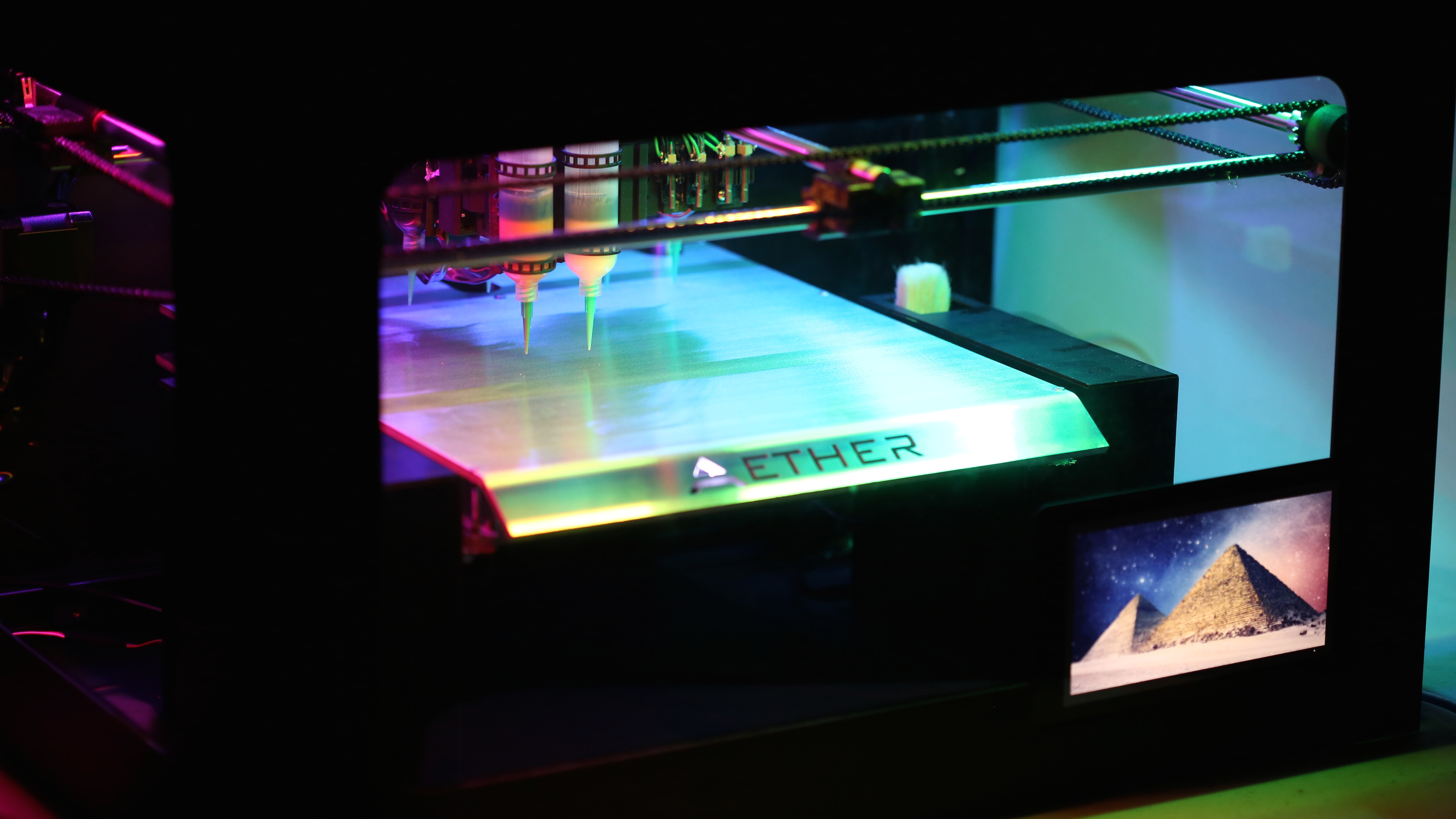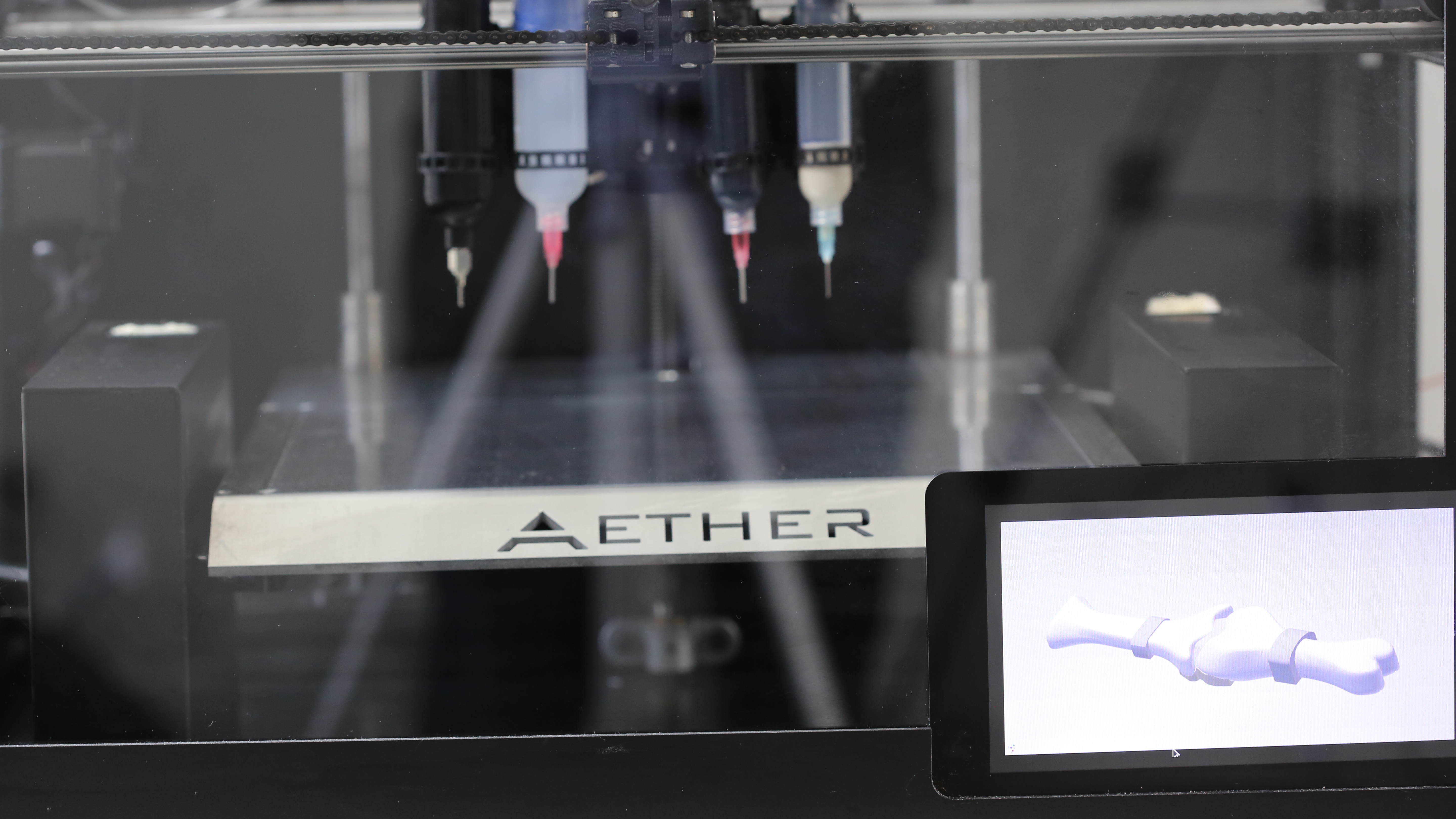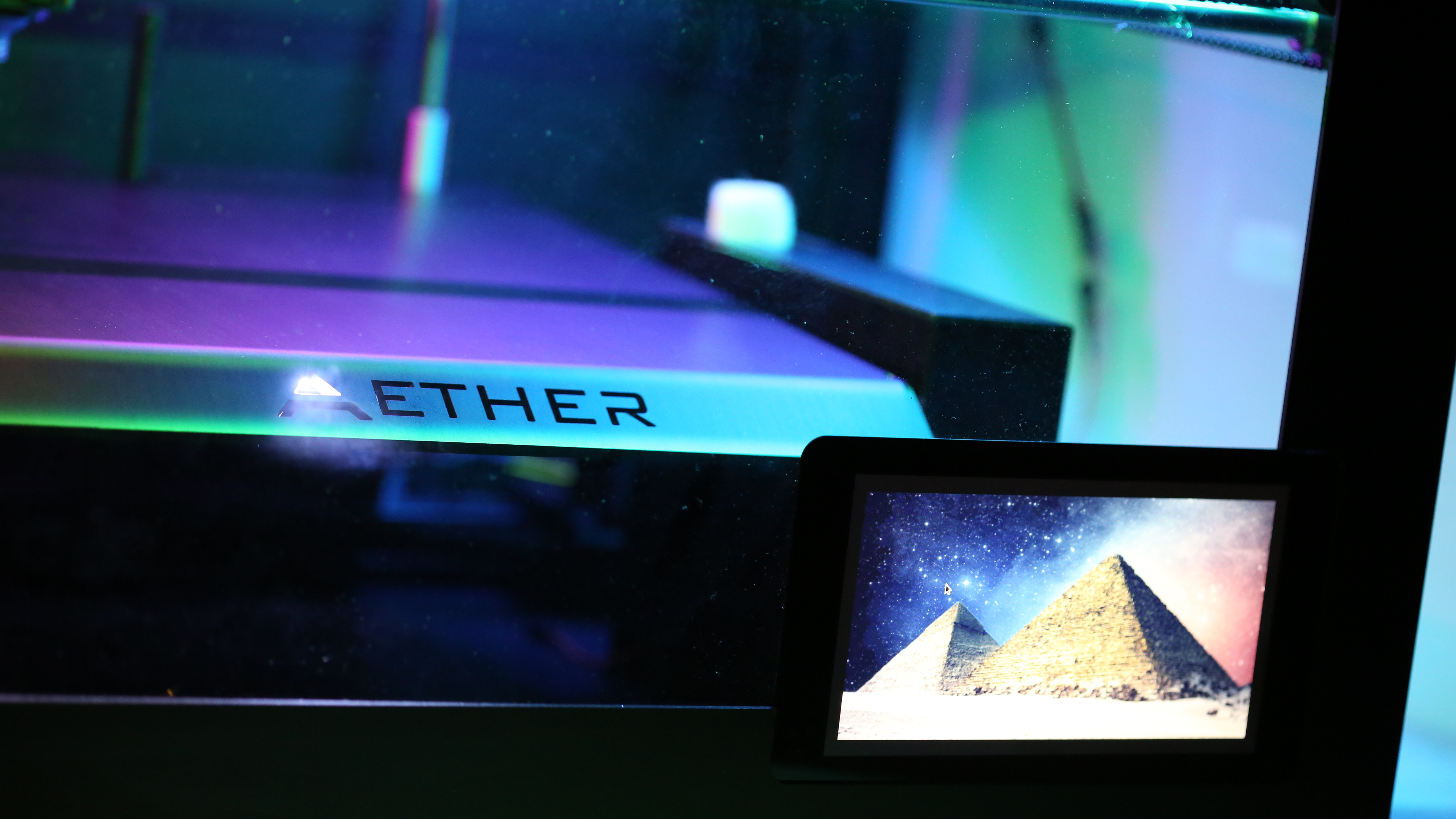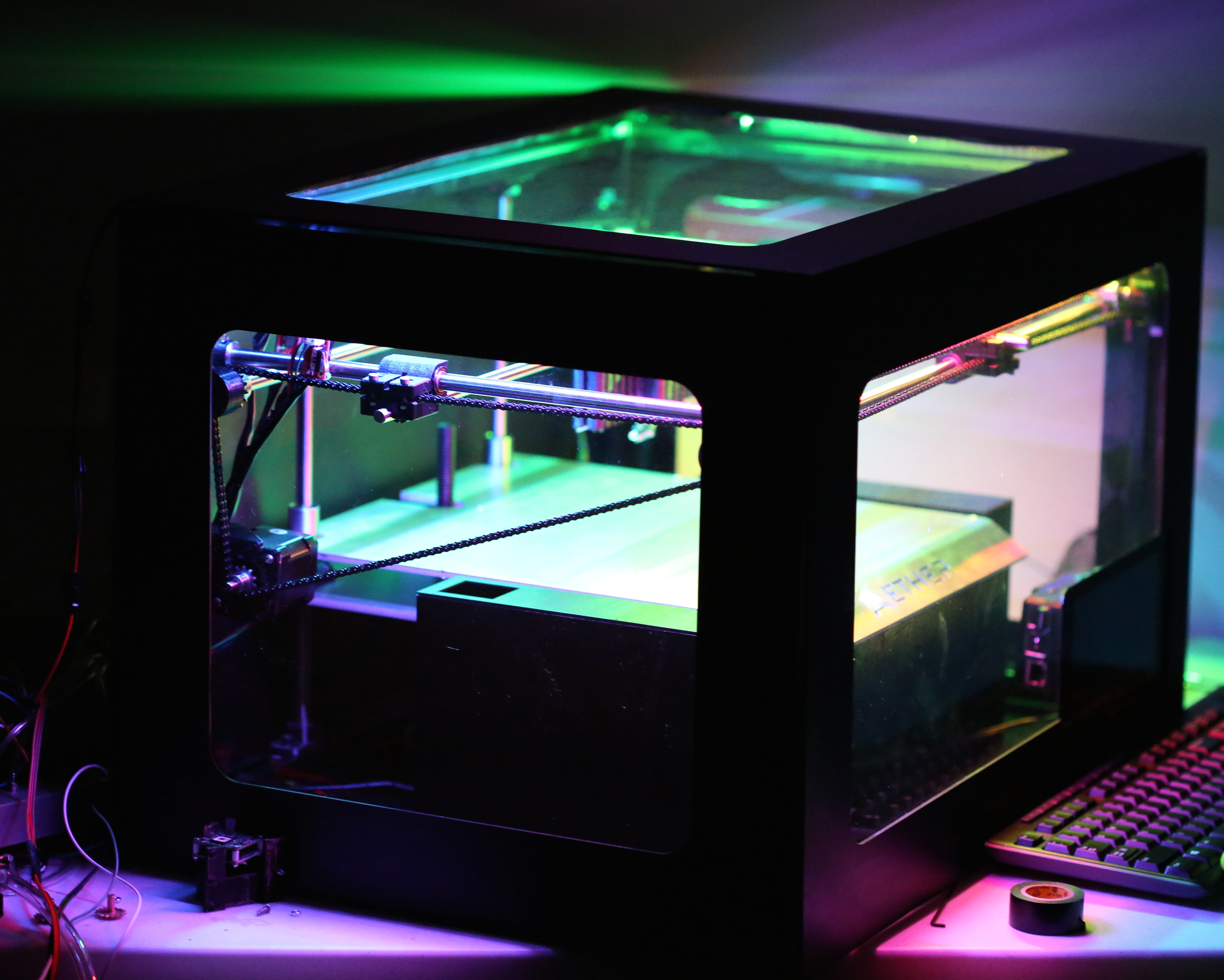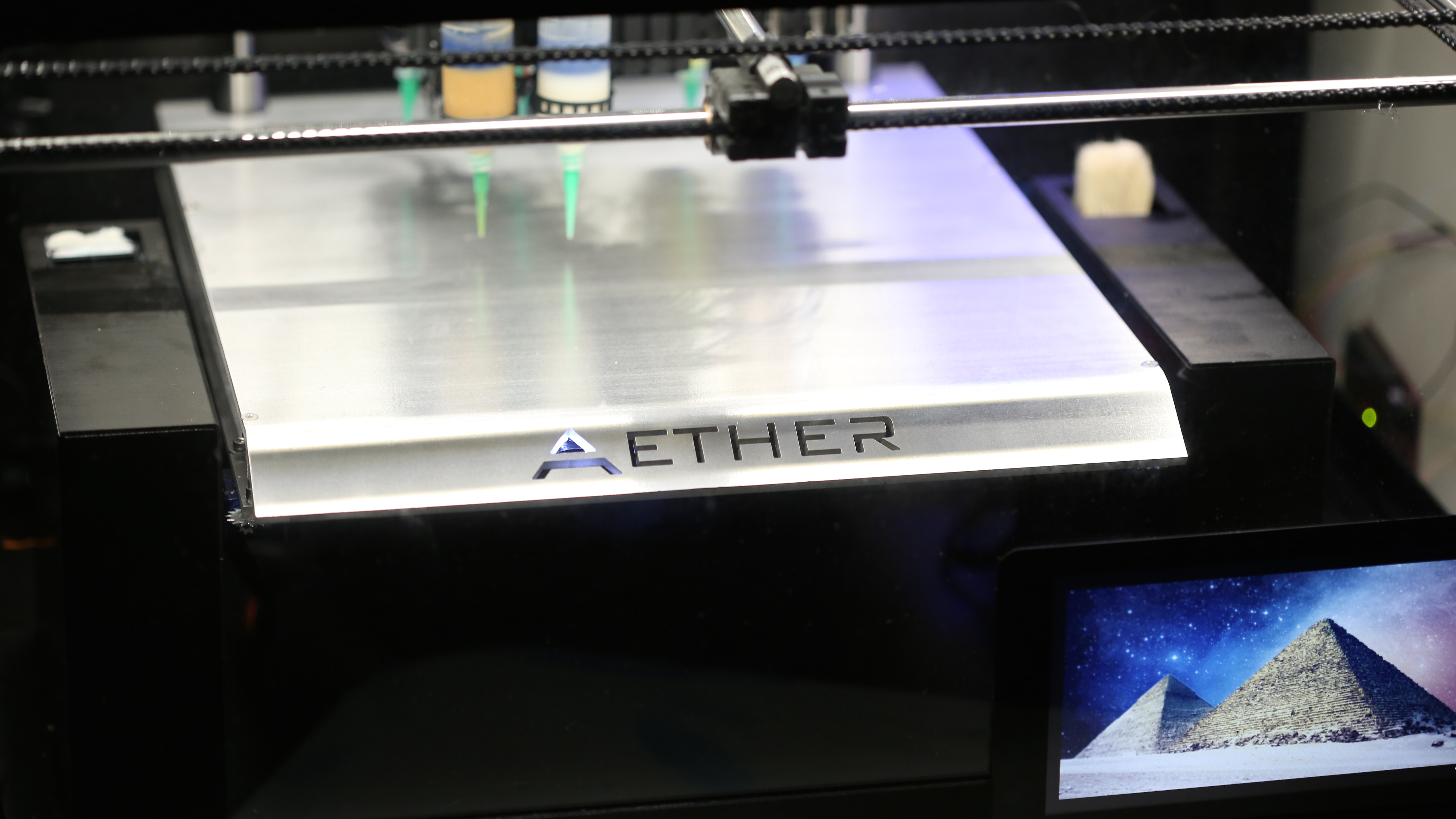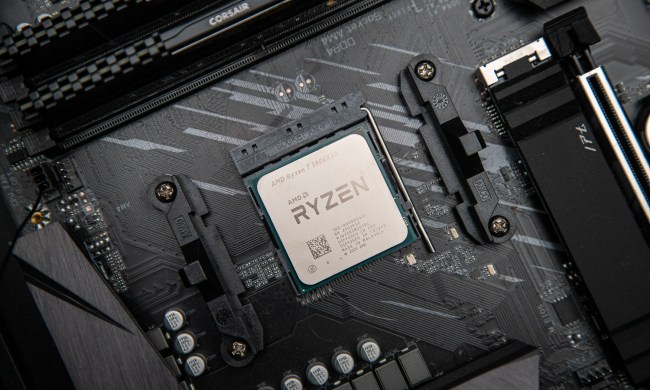The Aether 1, however, hopes to represent a step in the direction of increased affordability. A sub-$9,000 3D bioprinter set to make its debut later this year, the Aether 1 makes some very bold claims for itself — including its ability to outperform rivals with price tags in excess of $250,000.
To demonstrate its promise, Aether 1’s creators recently debuted a gorgeous 22x speed video showing a proof-of-concept of how the 3D printing of bones will look on the upcoming bioprinter.
“The video shows two bones printed with a synthetic bone material, similar to something called hydroxyapatite,” Ryan Franks, Aether 1’s CEO, told Digital Trends. “They are connected by a tendon of silicone. Each bone is wrapped in a band of graphene. Then we also printed in 6 electroconductive wires, and attached them to an integrated circuit chip. We did seeding with two different stem cell types, as well, which are the blue and dark red liquids you see. It was mostly an example print to give some idea what Aether 1’s basic functionality is like.”
The main advantage Aether 1 boasts over similarly low-cost bioprinters is its ability to print more than two materials at once. Being able to do this is about more than just saving time: printing only two materials at once is very restrictive, and makes it impossible to create very complex structures.
“Aether 1 allows you to use up to 8 syringe extruders at once,” Franks continues. “That’s double the number you see in our video, which means you can use eight syringe-extruded biomaterials at once — four times the amount of syringe extruders compared to other $10k bioprinters, and twice the amount of syringes of some $250k bioprinters.” He adds that it will even be possible to combine 24 extruders together, which would mean people could actually print with 24 different materials at once. “It would be eight syringes, two FDM extruders, and 14 droplet jets,” he says. “Even the quarter-million-dollar bioprinters don’t come anywhere close to that.”
While we’ll definitely have to wait until Aether 1’s release to see proof that it works quite as well as Franks says, this is a gorgeous demonstration of how the dream of affordable 3D bioprinting is getting ever closer. We can’t wait.
